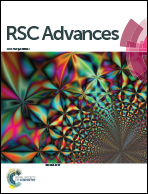Novel synergistic combinations of amphiphilic fatty acid derivatives for high-performance rubber–organoclay nanocomposites
Abstract
We report on the synergistic binary combination of amphiphilic fatty acids and their derivatives (FADs), which remarkably enhance the mechanical and thermal properties of cross-linked ethylene–propylene–diene monomer (EPDM)–organoclay nanocomposite as well as the melt processability of its non-crosslinked counterpart. The binary FAD mixture is composed of a stearic acid derivative (SAD) that preferentially increases the gallery gap of organoclays and a vegetable oil that mainly improves the dispersion of SAD-modified organoclays in the rubber matrix. The synergism between two FADs increases as both FAD components become more compatible with rubber matrix within the limit that the SAD component has a good affinity to organoclay enough to infiltrate into the gallery gap of organoclay and wet the surface of organoclay. Such outstanding performance enhancement has been achieved even at a very low loading level of organoclay simply by the incorporation of a suitable mixture of commercial-grade FADs during the traditional rubber compounding process. Therefore, we illustrate a novel and facile method to prepare a high-performance rubber nanocomposite with wide-ranging commercial benefits, without compromising the intrinsic advantages of rubber materials such as lightweight, optical transparency, high ductility and flexibility.


 Please wait while we load your content...
Please wait while we load your content...